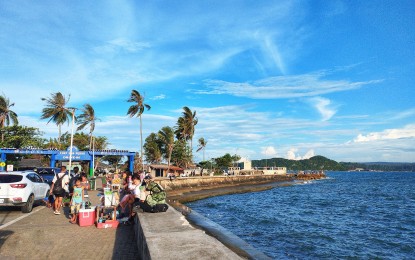
FORT SAN PEDRO. The current state of the Fort San Pedro. The National Museum of the Philippines (NMP) will restore Fort San Pedro or Fort Nuestra Señora del Rosario, an important cultural property built in the 15th century in Iloilo City. (Photo courtesy of Davy Jones Canaway-Tayco Estrellanes/Iloilo City Government)
ILOILO CITY – The National Museum of the Philippines (NMP) will restore Fort San Pedro or the Fort Nuestra Señora del Rosario, an important cultural property built here in the 15th century.
Mayor Jerry Treñas on Tuesday said he recently talked with NMP Director General Jeremy Barns via Zoom for the preparations on the preliminary works to determine the pre-restoration.
“They will determine if the old foundation is still there because the old plan still exists. They will start working from the old foundation,” Treñas said in an interview.
He said the Spaniards defended Iloilo by building the fortress because it was a very significant city during that time.
NMP Western Visayas, in a statement, said it has allotted PHP4 million for the pre-restoration project.
The preparation works will start with an archaeological excavation of up to 1.50 meters deep to locate the remains of the fort’s foundation.
It will also determine the missing parts or added portions but not necessarily structures that will serve as the basis for the restoration plan.
NMP Visayas director Ma. Cecilia Tirol, together with Iloilo City government architects, inspected the site early this month.
NMP Archaeology Division, led by archaeologist Dr. Mary Jane Louise Bolunia, also started the review of the 1820 blueprint of the fort, comparing it to photographs taken in the 1930s up to the early 1940s and after World War II.
“These photos were overlaid with the recent photos of the fort to aid the technical experts in determining the extent of the site that will be covered by the project,” the statement said.
Fort San Pedro is a typical Spanish-built fortress, which is quadrilateral in shape and measures approximately 60 meters to 60 meters in building footprint. The walls are made from cut coral stones quarried from Guimaras, and are approximately 12 feet high and 30 feet thick.
“According to historical accounts, fortresses like the Fort San Pedro were constructed by the Spanish to protect the towns from the threats of Moro pirates. During the 20th century, the structure started deteriorating and was destroyed during World War II,” the NMP said.
The area is now used as a park, with remains of the original masonry walls, although still visible, already overshadowed by developments, it added. (PNA)
